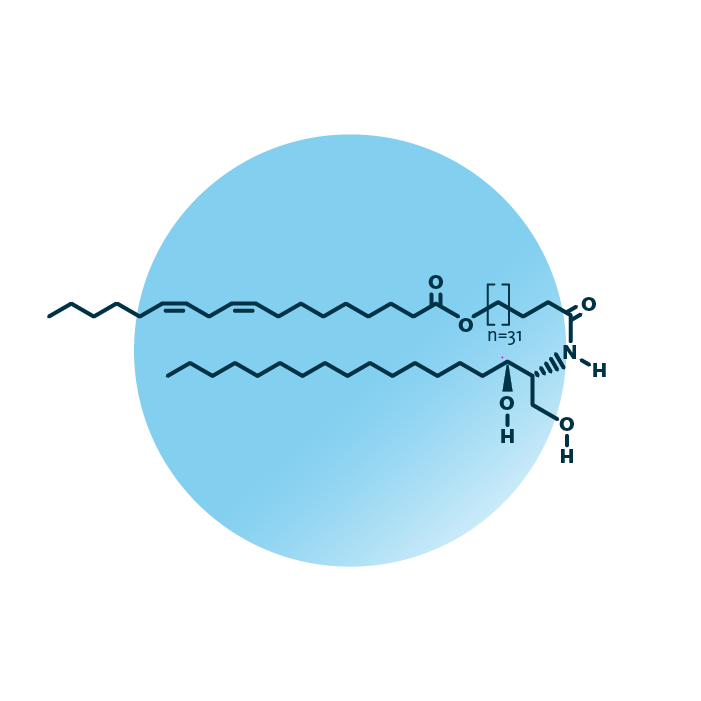About the structure and biological function of EOdS
Structure. Omega-hydroxy-fatty acid [EO] dihydro-sphingosine [dS] ceramides (CER[EOdS], or EOdS) belong to the group of ceramide lipids within the sphingolipids. Their structure consists of a sphingoid base, specifically dihydrosphingosine, and a fatty acid. The fatty acid is an ω-hydroxy fatty acid and “elongated” by a further fatty acid via an ester bond. The fatty acid can be of variable length, hydroxylated, and contain double bonds.
Function. The biological function of omega-hydroxy-dihydrosphingosines mostly revolves around skin health where they serve mainly structural roles. EOdS ceramides are critical to the formation of the lamellar phase of the epidermal barrier which prevents trans-epidermal water loss but also protects from the environment. Imbalanced skin ceramides can contribute or lead to the development of skin conditions. In general, reduced levels of omega-hydroxy ceramides are linked to dry skin and psoriasis.



